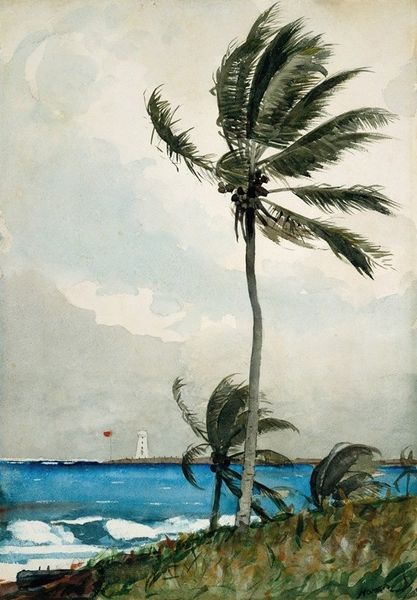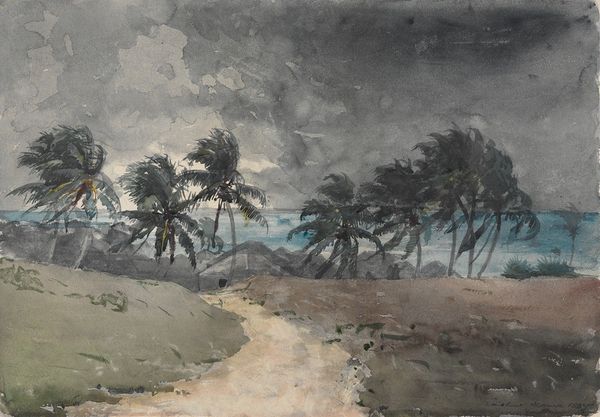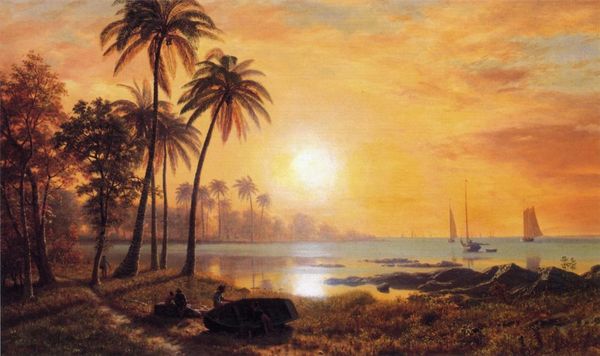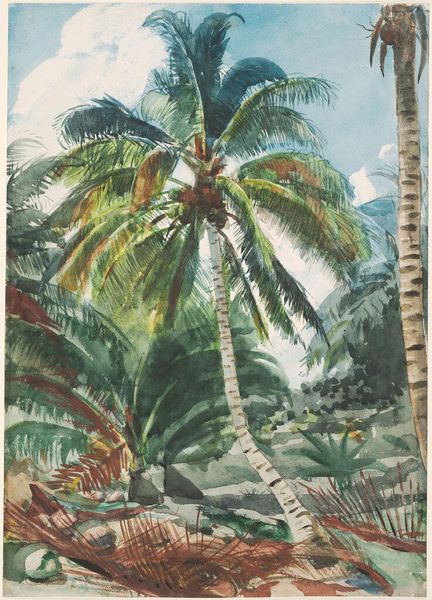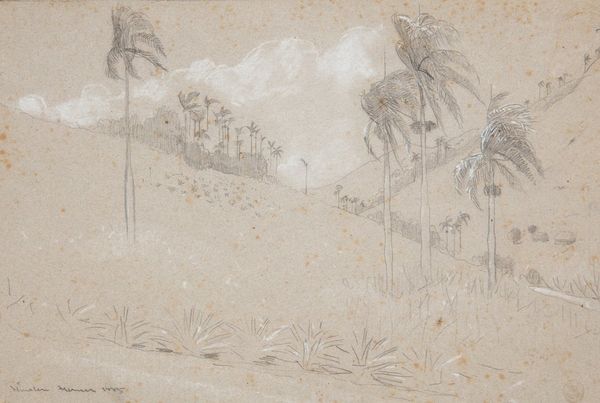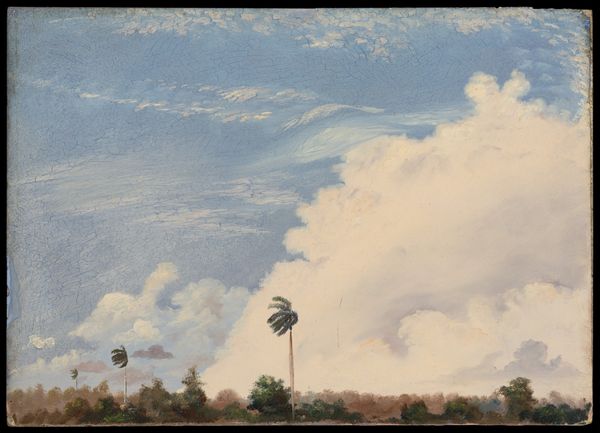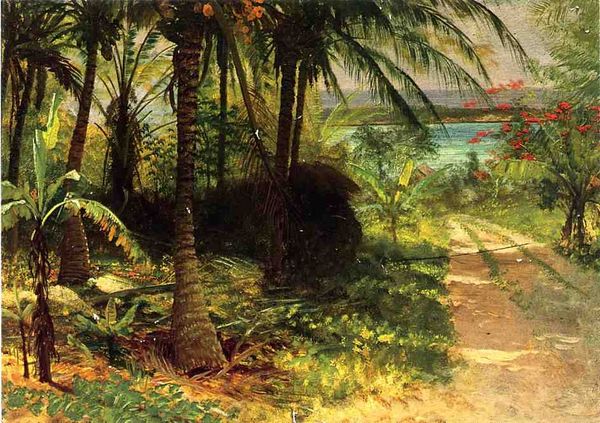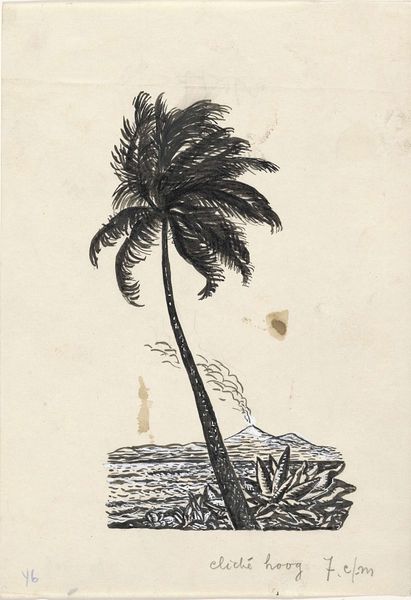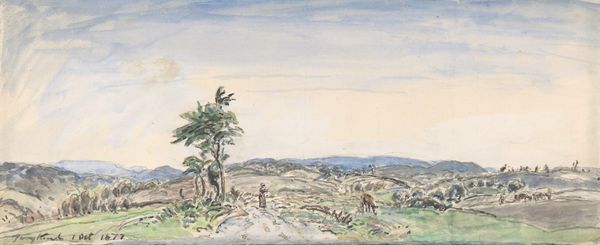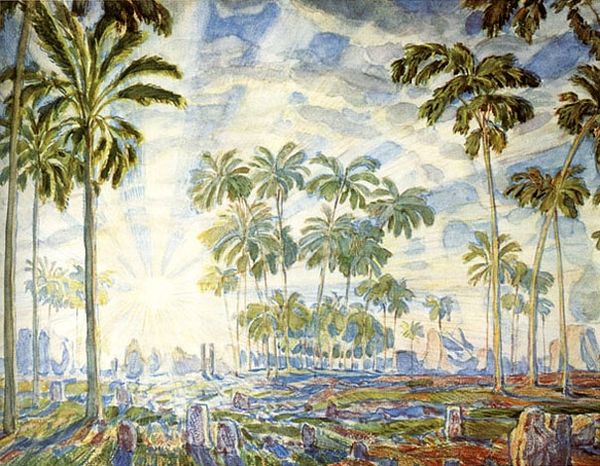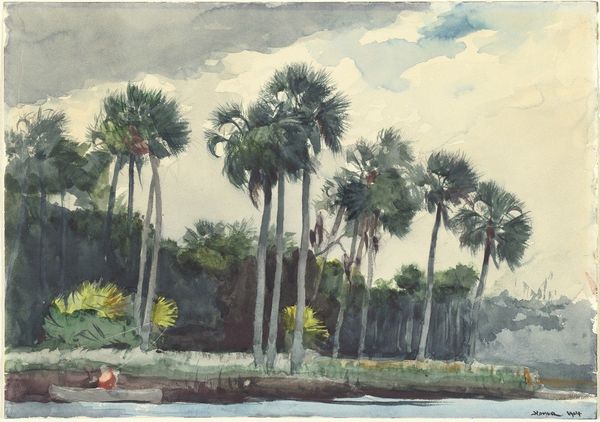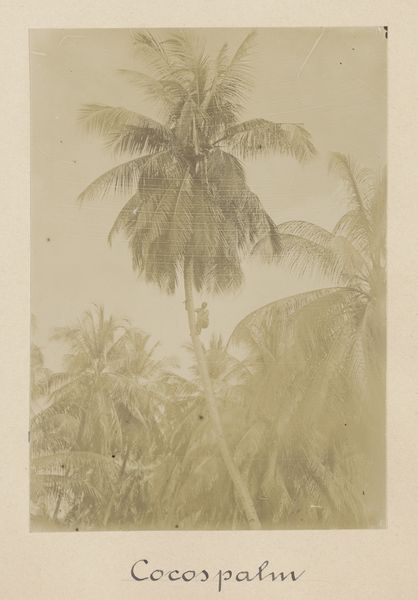
Copyright: Public domain
Editor: So, here we have Winslow Homer’s watercolor, "Palm Trees (Bahamas)" from 1888. It's evocative, almost dreamlike. I am really drawn to the palm trees, but the dark colors make it somewhat unsettling, rather than purely tropical. What do you see in this piece? Curator: Those palms immediately speak of more than just a vacation postcard. They are laden with symbolic weight. Think about palm trees as ancient symbols of victory, triumph, and eternal life – remnants from Roman times and even earlier. Editor: Triumph, even with the dark colors here? Curator: Absolutely! Notice how they pierce the sky, rising above the more ominous clouds. Homer is playing with contrast. What about the application of watercolor in layers: can it invoke impressions about his emotional state? Editor: I hadn't considered the technique itself. It does feel fluid and expressive. The color choices seem deliberate...perhaps speaking to an undercurrent of both serenity and turmoil? Curator: Precisely! And don't ignore the light and shadows playing across the trunks – consider the psychological push and pull. What happens when a symbol gets infused with emotional ambivalence? It deepens our relationship with the work. Editor: It makes the scene far more complex than a simple tropical view, right? The familiar subject takes on another meaning because of the other elements, its romantic depiction, but the deeper weight, perhaps? Curator: Indeed. Symbols are never static. They evolve with our experiences. Homer captured a moment of natural beauty and something that feels distinctly more internal, timeless. Editor: I will definitely look at landscapes differently from now on! It shows how much emotion an artist puts into depicting a specific time, and specific symbols to carry it along. Curator: And hopefully, to find similar richness in all the art we encounter.
Comments
No comments
Be the first to comment and join the conversation on the ultimate creative platform.
